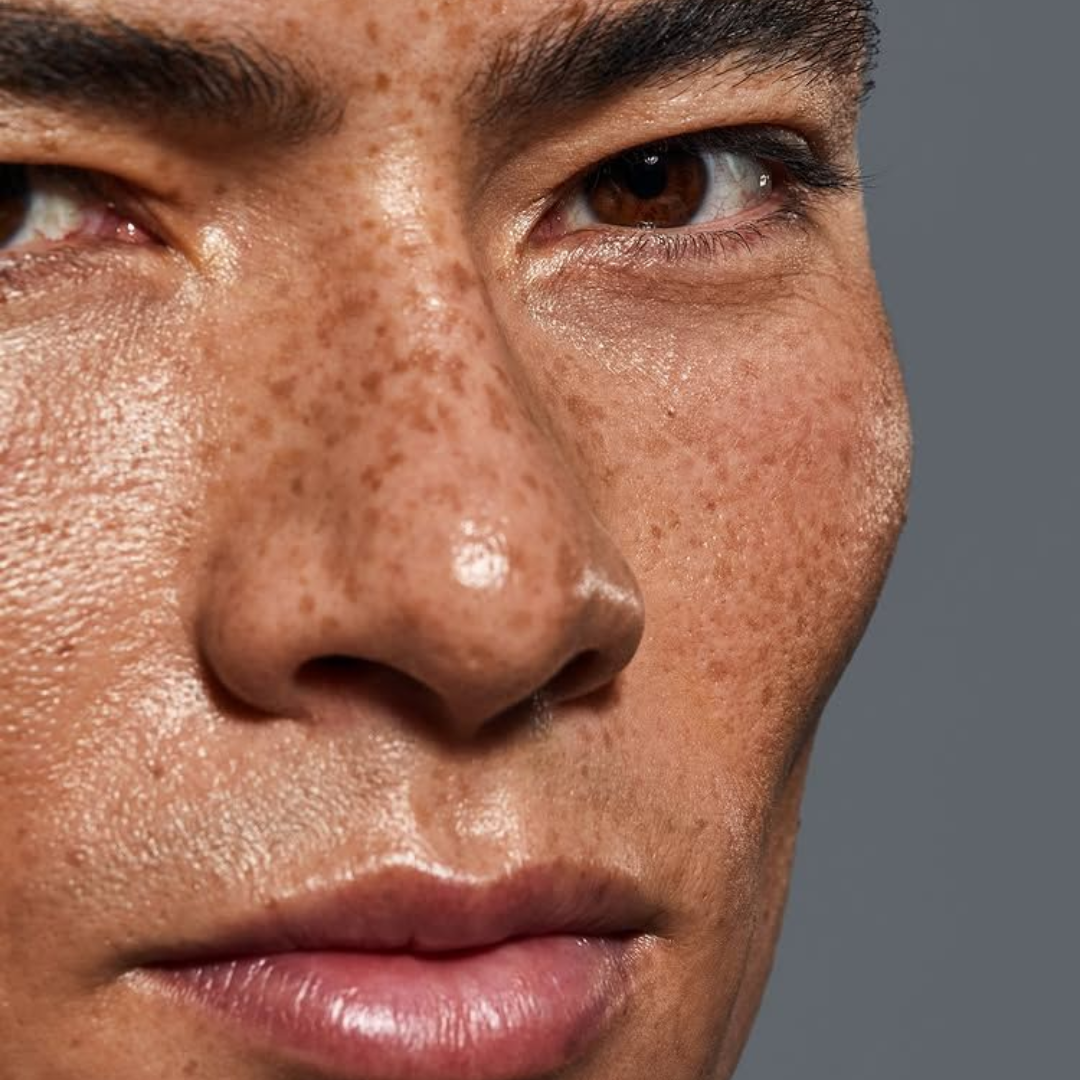
Which active ingredients are right for oily skin?
Share
Oily skin is a frequently encountered skin type, characterized by excessive sebum production. Although this production is a natural protective mechanism for the epidermis, it can lead to certain inconveniences: shine, dilated pores, imperfections and acne. To care for your skin, it's essential to choose skincare products containing the right active ingredients. These will help regulate sebum production, mattify the complexion and improve skin quality over the long term.
In this article, we'll review the main active ingredients recommended for oily skin, their benefits, and the best ways to incorporate them into a skincare routine.
Understanding the needs of oily skin
Before detailing the active ingredients, it's essential to understand the specific characteristics of oily skin.
-
It has excess sebum, particularly in the T-zone (forehead, nose, chin).
-
Pores are often dilated, which encourages the appearance of blackheads and blackheads.
-
It is more prone to skin imperfections such as pimples, acne and microcysts.
-
Contrary to popular belief, oily skin can also be dehydrated, i.e. lacking water, which sometimes increases sebum production in response.
A suitable routine must therefore meet several needs: regulating sebum, purifying the skin, tightening pores and maintaining good hydration.
Purifying and sebum-regulating active ingredients
1. Salicylic acid
One of the best-known active ingredients for oily skin issalicylic acid. This gentle exfoliant from the BHA (beta-hydroxy acid) family penetrates pores to dissolve excess sebum and impurities.
-
Benefits: keratolytic action, prevention of blackheads and blemishes.
-
Use: serums, lotions, purifying cleansers.
2. Zinc
Zinc is recognized for its sebum-regulating and anti-inflammatory properties.
-
Benefits: reduces shine, soothes irritation, regulates sebum production.
-
Use: mattifying creams, serums, dietary supplements.
3. Niacinamide (vitamin B3)
Niacinamide is a versatile ingredient much appreciated in cosmetics.
-
Benefits: sebum regulation, improved skin elasticity, reduced redness and pigmentation spots.
-
Use: light serums, moisturizing creams for oily skin.
4. The clay
Clays (green, white, red) are natural absorbents.
-
Benefits: purifies skin, absorbs excess sebum, tightens pores.
-
Use: weekly masks to rebalance the skin.
Exfoliating active ingredients for clearer skin
5. AHAs (fruit acids)
AHAs like glycolic acid orlactic acid are chemical exfoliants that remove dead surface cells.
-
Benefits: promote cell renewal, smooth skin texture, reduce imperfections.
-
Use: exfoliating serums, gentle peels (moderate use to avoid irritation).
6. Sulfur
Sulfur is an active ingredient traditionally used for oily and acne-prone skin.
-
Benefits: purifying, antibacterial and keratolytic properties.
-
Use: dermatological soaps, lotions or specific masks.
Moisturizing active ingredients for oily skin
Oily skin needs moisturizing just as much as dry skin. However, non-comedogenic active ingredients and light textures are preferable.
7. Hyaluronic acid
This active ingredient is a powerful moisturizer that retains water in the skin without adding oil.
-
Benefits: moisture retention, plumping effect, improved skin suppleness.
-
Use: hyaluronic acid-based serums, light moisturizing creams.
8. Aloe vera
Plant recognized for its moisturizing and soothing properties.
-
Benefits: moisturizes without greasing, soothes irritation, helps heal imperfections.
-
Use: pure aloe vera gels, light moisturizers.
Antibacterial and purifying active ingredients
9. Tea tree essential oil
Tea tree essential oil is a classic for oily and acne-prone skin.
-
Benefits: antibacterial and purifying action, promotes healing of imperfections.
-
Use: localized application (always dilute), purifying serums, anti-imperfection lotions.
10. Burdock extract
Burdock is a plant used in phytotherapy and cosmetics.
-
Benefits: purifying and detoxifying properties, regulates sebum secretion.
-
Use: purifying creams, dietary supplements.
Practical tips for incorporating these active ingredients into your routine
-
Gently cleanse: use a gentle cleanser containing zinc orsalicylic acid, without stripping the skin.
-
Exfoliate regularly: 1-2 times a week with AHAs or aclay mask.
-
Moisturize daily: use a light cream containing niacinamide orhyaluronic acid.
-
Local treatment: apply targeted treatments based on tea tree or sulfur to blemishes.
-
Protect the skin: use a sunscreen suitable for oily skin to avoid pigmented scars.
Conclusion
Oily skin requires a specific skincare routine, based on active ingredients capable of regulating sebum, purifying the skin and maintaining hydration. Among the most effective aresalicylic acid, zinc, niacinamide,hyaluronic acid and tea tree.
Properly used, this combination ofactive ingredients helps reduce imperfections, improve skin texture and restore a matte, harmonious complexion.
In short, to care for oily skin, it's essential to find the right balance between purifying without aggressing and moisturizing without weighing down the skin.
